POLAND
SDG 5
ELIZA ORZESZKOWA- znana i ceniona polska pisarka i publicystka epoki pozytywizmu, dwukrotnie mianowana do nagrody Nobla.
A well-known and respected Polish writer and journalist of the Positivist era (19th century), twice nominated for the Nobel Prize.
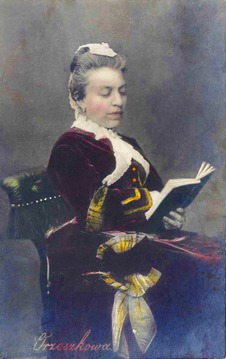
"Marta"-novel by E. Orzeszkowa
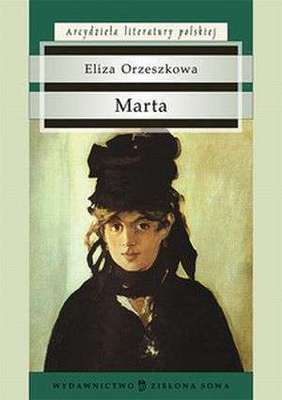
"A woman's life is an eternally burning flame of love - some say. A woman's life is a denial - others argue. A woman's life is motherhood - those are calling. A woman's life is a play - others are joking. The virtue of a woman is blind faith - the chorus of everyone agrees" - Orzeszkowa begins his novel with such "sentences", in order to conclude a few sentences later that a woman's life is not only love and lofty feelings. "Some of us, enveloped in the wings of the god of love, fly through our whole lives honestly, virtuously and happily, others after all, more numerous, far more numerous, with bloody feet walking on the ground fighting for bread, for peace, for virtue, for tears pouring profusely, suffering terribly , sinning cruelly, falling into the abyss of shame, dying of hunger ... ". This is how Orzeszkowa outlines the subject of her novel "Marta".
The main heroine of the story is Marta - a woman who married a certain clerk. Shortly afterwards, their daughter was born. Her husband was the only breadwinner and head of the family, who soon died of overwork, and his wife and daughter from that moment would have to cope alone.
Marta goes to the Information Office for Teachers in search of work. It turns out that her knowledge of French music and language is very basic. When she asks for the possibility of giving private lessons, the office operator claims that only men can give such lessons. However, these men possess a similar degree of knowledge to Marta. So it turns out that the only aspect Marta can't fulfill is - he's not a man.
When she starts teaching French with a 12-year-old girl, the girl finds herself able to do more than her teacher. Marta gives up this activity without being paid- after all, as she claims, she didn't teach anything. The woman takes up other jobs, but her employers get rid of her very quickly. When her bad fate is still trying to worry her - Marta's daughter is in bad health.
One of the golden solutions that the heroine could take was to follow in the footsteps of her friend Karolina and start selling her body on the street. When it comes to a meeting, Marta sees the luxuries in which Karolina flows, whereas she has no money to buy food for her daughter.Marta should break and go to the street considering the fact she is the mother responsible for her child. In addition, she knows that her dughter will soon die. And despite all these circumstances, Marta can't sell her body. On the one hand, being a prostitute is unacceptable to her, and on the other, the woman still loves her deceased husband and is not able to betray what they had built together.
The novel shows the heroine's drama. Martha's death changed nothing, the world still follows the same laws. The world - the environment - the realities in which Marta came to live are unimpressed. The novel describes the realities of the 19th century for women like Marta who as a a widow is insufficiently educated, who cannot h in a fair and way keep herself and her sick daughter.
Główną bohaterką historii jest Marta – kobieta, która wyszła za mąż za pewnego urzędnika. Niedługo potem urodziła im się córeczka. Jej mąż był jedynym żywicielem i głową tej rodziny, który wkrótce człowiek zmarł z przepracowania, a jego żona i córka od tego momentu będą musiały poradzić sobie same.
Marta udaje się do Biura Informacji dla Nauczycieli w poszukiwaniu pracy. Okazuje się, że jej znajomość muzyki i języka francuskiego jest bardzo podstawowa. Kiedy prosi o możliwość udzielania prywatnych lekcji, prowadząca biuro twierdzi, że takich lekcji udzielać mogą tylko mężczyźni. Jednak są to mężczyźni, którzy posiadają podobny stopień wiedzy do Marty. Okazuje się więc, że jedynym aspektem jakiego Marta nie jest w stanie spełnić to – nie jest mężczyzną.
Kiedy zaczyna prowadzić lekcje języka francuskiego z 12-letnią dziewczynką, okazuje się, że ta potrafi więcej niż jej nauczycielka. Marta rezygnuje z tego zajęcia, nie biorąc za spędzony na nauczaniu czas zapłaty – w końcu jak twierdzi niczego dziewczynki nie nauczyła. Kobieta podejmuje się kolejnych zajęć, jednak pracodawcy bardzo szybko się jej pozbywają. Kiedy zły los próbuje jej jeszcze dołożyć zmartwień – córka Marty podupada na zdrowiu.
Jednym ze złotych rozwiązań jakie mogła podjąć bohaterka, to pójść w ślady swojej koleżanki Karoliny i zacząć sprzedawać swoje ciało na ulicy. Kiedy dochodzi do spotkania kobiet, Marta widzi luksusy w jakich opływa Karolina, gdy ta nie ma co do garnka dla córki włożyć. Pomimo tych wszystkich okoliczności Marta nie potrafi sprzedać swojego ciała.
Powieść pokazuje dramat bohaterki. Śmierć Marty w ostatecznym rozrachunku niczego nie zmieniła, świat dalej rządzi się tymi samymi prawami. Świat – środowisko – realia, w których przyszło żyć Marcie są niewzruszone. Powieść opisuje realia XIX-wieczne, w których przyszło żyć takim kobietom jak Marta. Marty jako wdowa, niedostatecznie wykształcona która nie ma możliwości sama – w sposób uczciwy i nieuwłaczający jej – utrzymać siebie i swojej chorej córki.
Orzeszkowa's novel has been translated into as many as 63 languages. Women from all over the world sent tons of letters to the author, thanking her that someone finally described their difficult socio-material situation. How brilliant it illustrates that at various latitudes and latitudes women struggled with similar problems!
TURKEY
BURSA MURADİYE
SDG 5 - GENDER EQUALITY
" The Invisible Labour of the Woman" is written by Gulnur Acar Savran. It talks about how women's labour is underestimated and how women are discriminated in their working lives.
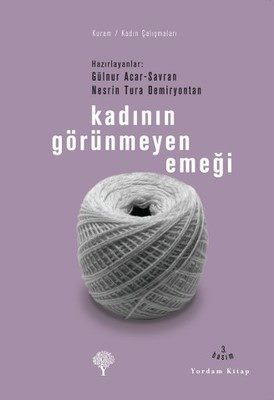
SDG 5: gender inequality in Slovenian literature:
Ivan Tavčar: Visoška kronika 1919
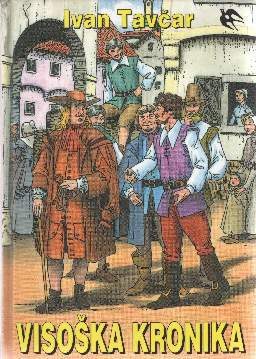
SDG 5
FRANCE
-Three women living completely different lives in three different countries, each facing a monumental change, and the discrimination that exists in their society.
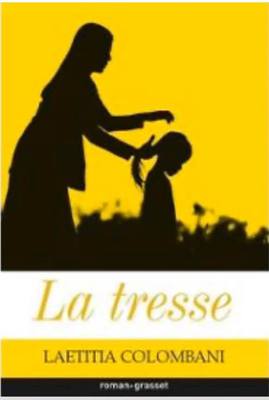
SDG 5 - Gender Equality
The Portuguese actress believes that all begins from early age. For this reason, it was launched an educational project with the objective of promoting gender equality in basic schools, something that has already earned the United Nations' recognition. Mariana Num Mundo Igual, a narrative that calls for inclusion (not only of gender, but of race, ethnicity, nationality and religion), has just been transformed into a play

𝗠𝗮𝗹𝗮 𝗿𝗲𝘃𝗼𝗹𝘂𝗰𝗶𝗼𝗻𝗮𝗿𝗸𝗮 (𝟭𝟵𝟯𝟲.), 𝗠������𝗝𝘂𝗿𝗶𝗰́ 𝗭𝗮𝗴𝗼𝗿𝗸𝗮
Istovremeno duhovita i dirljiva, povijesna i aktualna priča o maloj revolucionarki nedavnoga našega Zagreba, Zlatici.
Ženi koja je unatoč kulturnim i socijalnim prilikama svojega vremena odlučila napustiti pretpostavljenu žensku ulogu majke i kućanice, i u patrijarhalnome društvenome i obiteljskome okružju devetnaestoga stoljeća postala učiteljicom.
Ovaj roman uči nas kako korak prema spolnoj jednakosti mogu napraviti čak i oni najmanji i najpotlačeniji među nama.
𝗠𝗮𝗹𝗮 𝗿𝗲𝘃𝗼𝗹𝘂𝗰𝗶𝗼𝗻𝗮𝗿𝗸𝗮 (𝟭𝟵𝟯𝟲.) 𝗯𝘆 𝗠𝗮𝗿𝗶𝗷𝗮 𝗝𝘂𝗿𝗶𝗰́ 𝗭𝗮𝗴𝗼𝗿𝗸𝗮
Boath amusing and touching, historical and modern, this is a story of a little revolutionary girl from our own town of Zagreb.
It is a tale of a young women in a truly patriarchal world who decided, in spite of the cultural and social enviroment of her time, to step out of the imposed role of a housewife and a mother, and become a teacher.
This by even the smallest and oppressed ones among us.
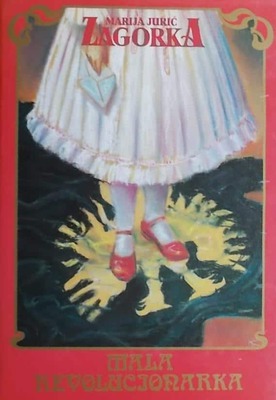
SDG 5 - Gender equality
Dinko Šimunović - Duga - a short story
Topic: Tragic death of a girl called Srna whose parents didn't let her play, run and sing, because she was a girl, and she wanted it so much. Her wish to be a boy and do what she wants led her to her death (she wanted to pass under the rainbow).
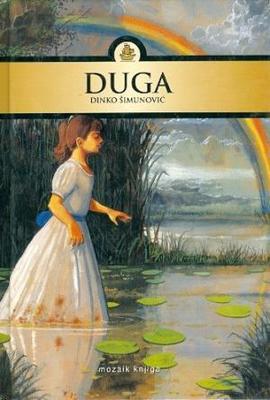
GREECE

Alexandria 1905. Agamemnon and Urania Vrana live under the care of their uncle and his French wife. Shortly before the outbreak of the First World, the intelligent Agamemnon lifts his stature in the Alexandrian merchant community, while his marriage to the charming Anastasia Yasoglou of Smyrna seals the coveted happiness. Agamemnon's sister Urania, after stumbling in love with a young Egyptian and her unfortunate marriage, becomes a staunch supporter of Huda Shaarawi, sending a message of national and feminist awakening to a woman's pansy. Her revolutionary nature leads her to Metaxas Greece, leaving Alexandria, in the trusted hands of her brother, her great daughter Catherine.
or Catherine with the backdrop of the painful e
ater, archaeologist Cleo Antipa, Catherine&
airo at the invitation of Italian archaeologist
a's "own neighborhoods" brings to
attle of El Alamein in 1942, capable of redeemi
a fictional review of two successive world wars
erchants, intellectuals, poverty and hauntings.
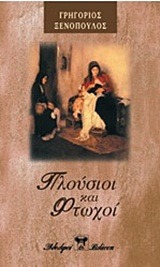
OXYMORON SHAPE by KANI KARAVA
The story begins in the storm of events of '73, shortly before the Polytechnic uprising. Lisa, a member of the KKE, is married to Panagiotakis, an ambitious person with no particular political ideology, but with a foothold in all political spaces. Their relationship is at a critical juncture, but she herself, influenced by a revelation in her early teens, is unable to deal decisively with the situation. In close-up, the faces of the close and wider family space stand out one after the other and, highlighting their problems, take an active part in the narration. Through the heroine's constant travels to Paris, Brussels, Athens, the stories of the protagonists are shocking, the relationships are reshaped, sharpening and confrontation are created. Everything is changing: relationships, ideologies, mentalities ... Besides, they are the secrets that are constantly springing up and haunting their lives.
The Oxymoron Shape is a journey full of realism, liveliness and contemplation. Love, politics, ideology, feminism, the search for an independent personal life are the central axes of storytelling and travel.
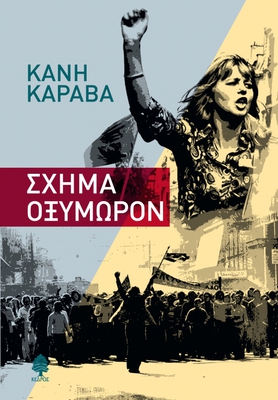
maze.com/@AOZZOLLWI/sdg-5" width="570">
https://docs.google.com/forms/d/160DkO03R_mw47ed3d6LVYy8MD5kwF-tR64IV79LTx3E/edit?usp=sharing